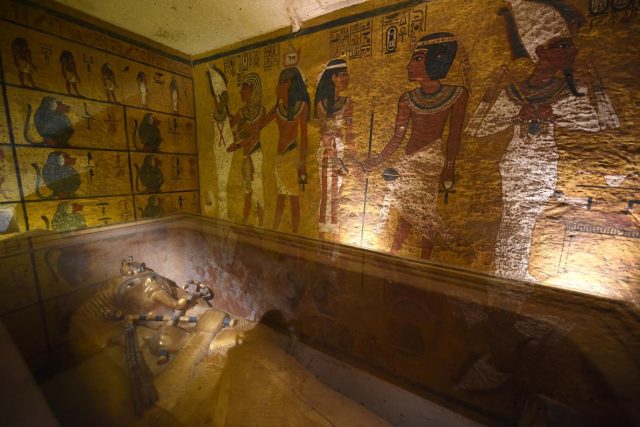MI weekly selection #173

Radar detects objects in hidden rooms within Tutankhamun’s tomb
Additional rooms in Tutankhamun’s burial chamber containing objects made of metal and organic materials have been detected through the north and west walls by radar scans. What is in these rooms is a mystery, but some experts say the rooms could be related to Queen Nefertiti. Further scans are scheduled for later this month before officials decide how to proceed.
Pluto, a pretty wild place geologically
Pluto’s terrain is more varied than scientists originally anticipated, recent studies suggest. The dwarf planet is home to unusual mountain ranges, an underground ocean, glaciers and what appear to be ice-spewing volcanoes, among other landscapes, according to five studies published in Science.
Tarantula Nebula home to group of huge stars spied by Hubble
A cluster of huge stars has been found within the Tarantula Nebula by the Hubble Space Telescope. “Because they are so massive, they are all close to their so-called Eddington limit, which is the maximum luminosity a star can have before it rips itself apart. And so they’ve got really powerful outflows. They are shedding mass at a fair rate of knots,” said Paul Crowther, author of the study published in the Monthly Notices of the Royal Astronomical Society.
Evidence of new particle at LHC grows slightly but remains elusive
Evidence of a new particle at the Large Hadron Collider is growing stronger but is still proving elusive. The significance of the excess of photons seen in a CMS test has grown, according to data presented at a conference Thursday in Italy, but the significance dropped slightly in the analysis of ATLAS experiments.
Humans interbred with Neanderthals, Denisovans many times
A study of global genomes has found that ancient humans interbred with Neanderthals and Denisovans a minimum of four times, and researchers suggest that the interbreeding strengthened modern humans’ immunity to pathogens. Scientists looked at nearly 1,500 genomes from people worldwide.